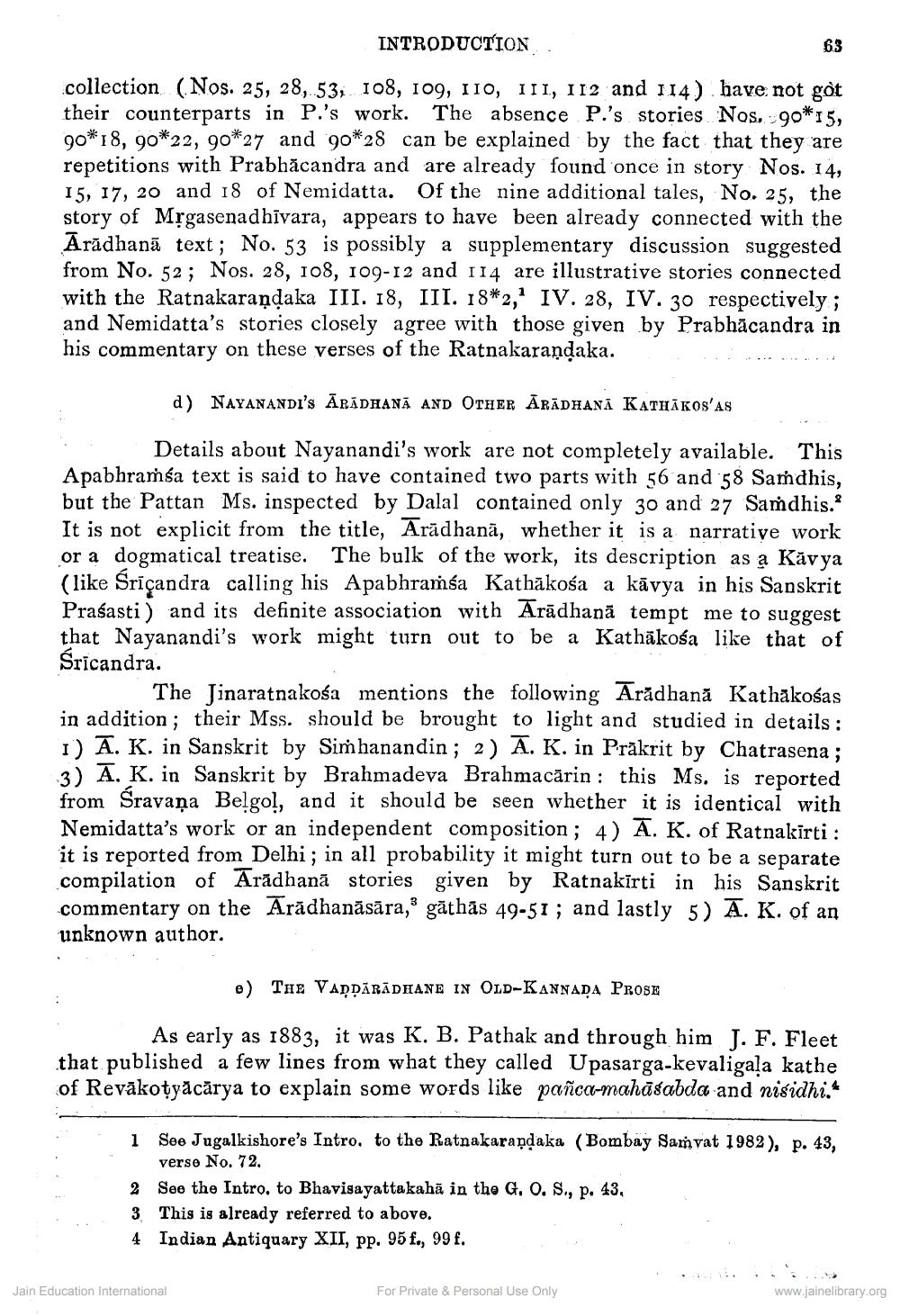________________
INTRODUCTION
63
collection (Nos. 25, 28, 53, 108, 109, IIO, III, I12 and 114) have not got their counterparts in P.'s work. The absence Pi's stories. Nos. 90*15, 90*18, 90*22, 90*27 and 90*28 can be explained by the fact that they are repetitions with Prabhăcandra and are already found once in story Nos. 14, 15, 17, 20 and 18 of Nemidatta. Of the nine additional tales, No. 25, the story of Mrgasenadhivara, appears to have been already connected with the Ārădhanā text; No. 53 is possibly a supplementary discussion suggested from No. 52; Nos. 28, 108, 109-12 and 114 are illustrative stories connected with the Ratnakarandaka III. 18, III. 18*2, IV. 28, IV. 30 respectively; and Nemidatta's stories closely agree with those given by Prabhācandra in his commentary on these verses of the Ratnakarandaka.
.......
d) NAYANANDI'S ĀRĀDHANĀ AND OTHER ĀRĀDHANA KATIĀKOS'AS
Details about Nayanandi's work are not completely available. This Apabhramsa text is said to have contained two parts with 56 and 58 Samdhis, but the Pattan Ms. inspected by Dalal contained only 30 and 27 Samdhis. It is not explicit from the title, Ārādhanā, whether it is a narrative work or a dogmatical treatise. The bulk of the work, its description as a Kăvya (like Sriçandra calling his Apabhramśa Kathākośa a kāvya in his Sanskrit Prasasti ) and its definite association with Arādhanā tempt me to suggest that Nayanandi's work might turn out to be a Kathākośa like that of Śricandra.
The Tinaratnakosa mentions the following Aradhanā Kathakośas in addition; their Mss. should be brought to light and studied in details :
I) A. K. in Sanskrit by Simhanandin; 2) Ā. K. in Prākrit by Chatrasena; 3 Ā. K. in Sanskrit by Brahmadeva Brahmacärin : this Ms. is reported
from Sravana Belgol, and it should be seen whether it is identical with Nemidatta's work or an independent composition; 4) A. K. of Ratnakirti : it is reported from Delhi; in all probability it might turn out to be a separate compilation of Arādhanā stories given by Ratnakirti in his Sanskrit commentary on the Arādhanāsāra, gāthas 49-51; and lastly 5) A. K. of an unknown author.
e) THE VADDĀRĀDHANE IN OLD-KANNADA PROSE
As early as 1883, it was K. B. Pathak and through him T. F. Fleet that published a few lines from what they called Upasarga-kevaligala kathe of Revākotyācārya to explain some words like pañca-mahūsabda-and nisidhi.
1 See Jugalkishore's Intro, to the Ratnakaraşdaka (Bombay Samvat 1982), p. 43,
verse No. 72. 2 See the Intro. to Bhavisayattakahā in the G, O. S., p. 43, 3. This is already referred to above. 4 Indian Antiquary XII, pp. 95 f., 99 f.
Jain Education International
For Private & Personal Use Only
www.jainelibrary.org




